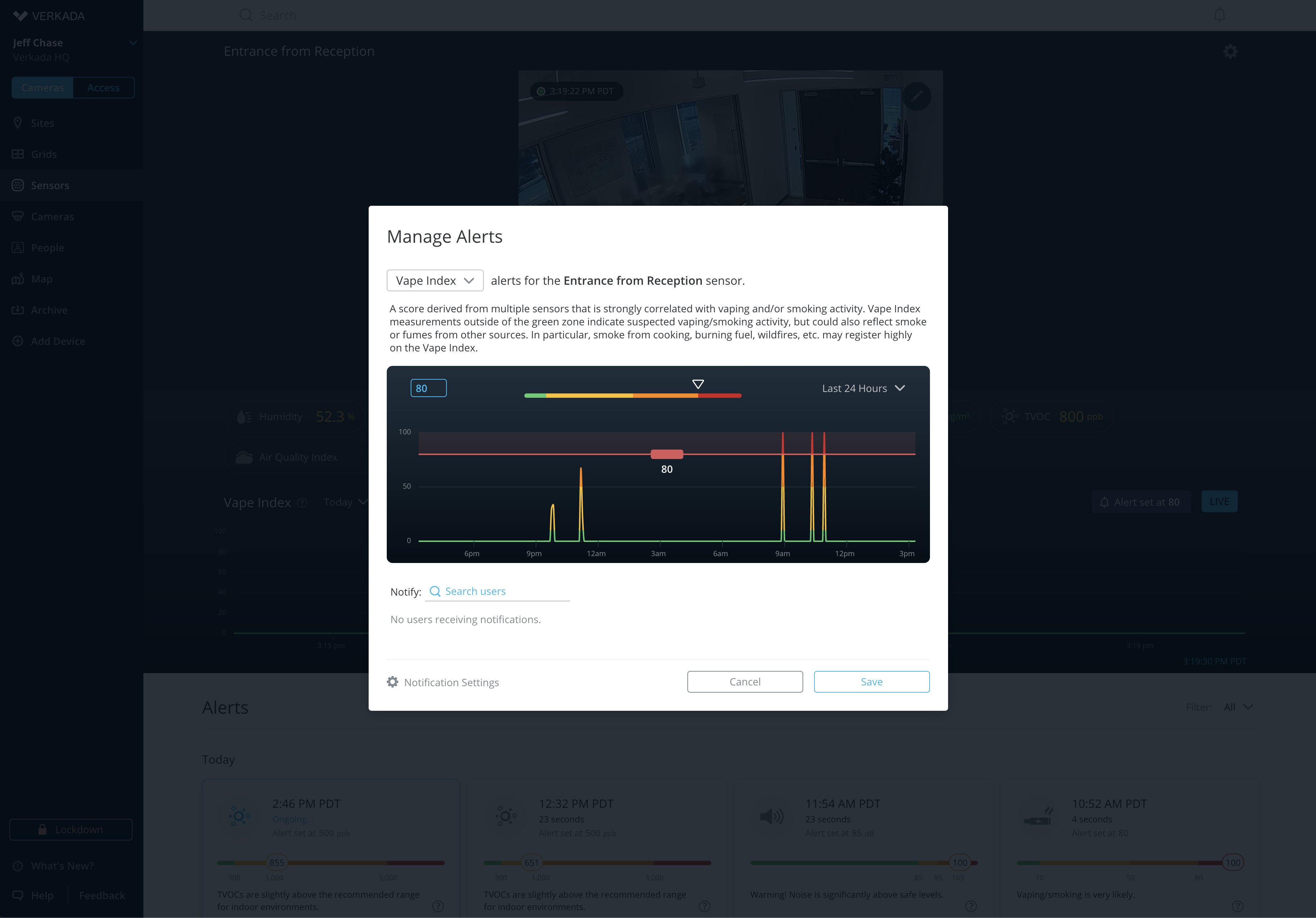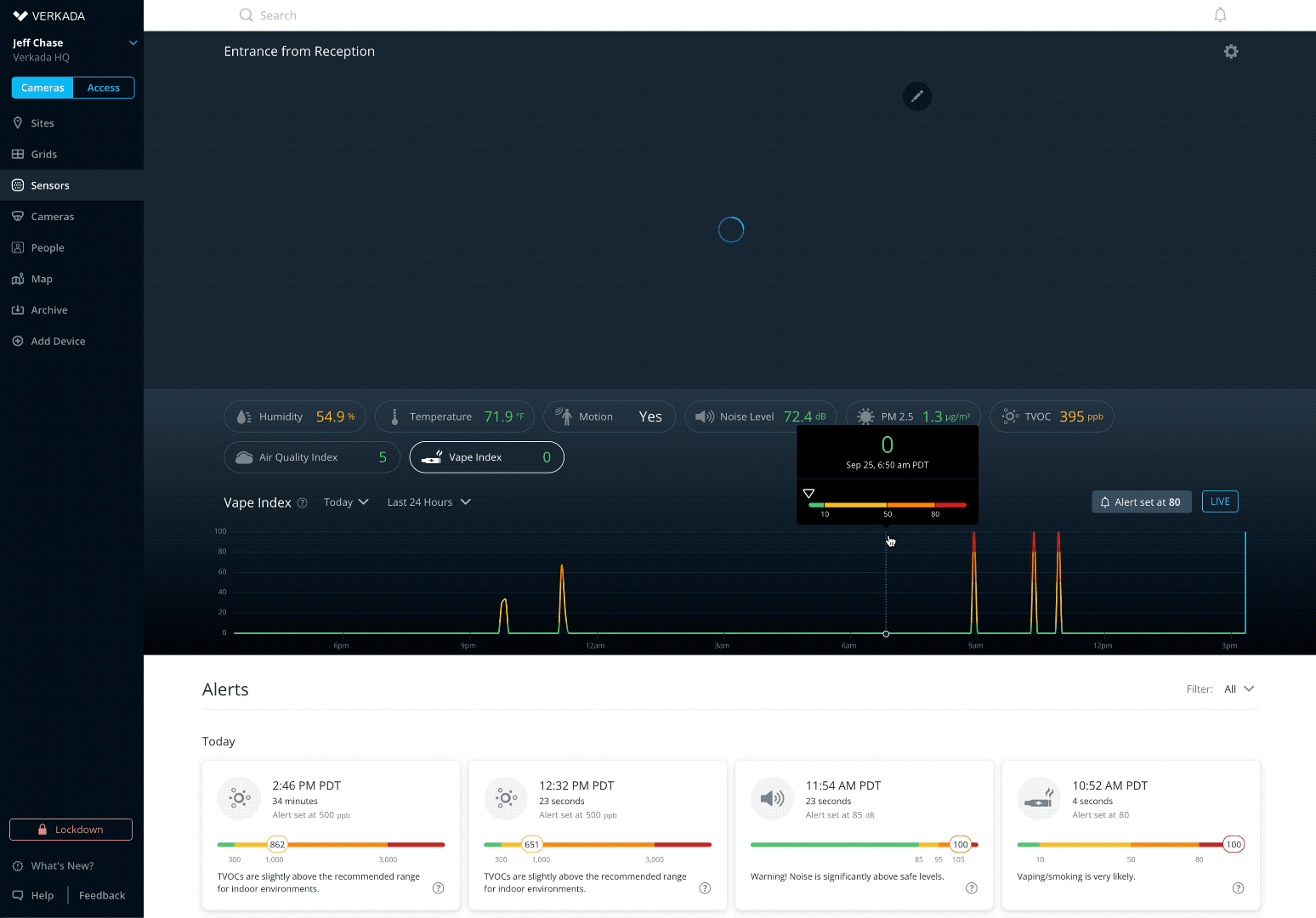As schools continue to work their way through safely and effectively returning students to the classroom in response to COVID-19, there is still an ongoing epidemic that continues to be top of mind for educational administrators: student vaping.
Student vaping (including e-cigarettes) is a topic that has dominated news headlines for the last few years. Despite many of the efforts, the issue hasn’t gone away. In fact, over the last year alone, vaping and e-cigarette use has grown by 1,000 percent amongst high school students. More shockingly, this is even as usage among the nation’s youth has declined.
While there are clear health implications for students who choose to vape, the decision to do so on campus also impacts fellow students and faculty. This is especially true when done in areas like bathrooms and locker rooms where there isn’t proper circulation or air filtering.
A clear step in the right direction is the education on the effects of vaping. However, prevention is a crucial factor for improving student’s and faculty’s health and safety alike.
The Challenges of Vape Detection
One of the most significant challenges for schools dealing with student vaping is that it's challenging to detect. Without evidence, or even the ability to know it's happening in the first place, it's difficult for administrators to know which students were involved, and in some instances, leads to a wrongful accusation.
Why Vaping is Hard to Detect
Unlike cigarettes and marijuana, which have distinct smells that are easy to identify, vaping is more difficult to associate with a scent. Products are available in a wide range of flavours, including ones that are unscented.
Students have also become accustomed to hiding their vaping while on campus, reducing the noticeability of vape clouds (the voluminous amounts of vapor exhaled) or smoking in areas like bathrooms and locker rooms.
While these efforts can make it challenging to identify student vaping, what doesn’t change is the impact exhaled vapor has on the breakdown of chemicals present in the air at a given time.
These chemicals include nicotine, propylene glycol and glycerol, which contribute to increases in total volatile organic compounds (TVOCs), as well as increases in particulate matter and other cancer-causing chemicals.
Detecting Student Vaping with Data
While it’s impossible to notice these chemical compounds with the naked eye, they can be detected and measured using sensor-based devices.
Using sensors for measuring levels of TVOCs, PM2.5 and a range of other environmental changes, administrators can begin to detect when vaping occurs and have data to associate with the incident to take preventative action.
At Verkada, we’ve developed our SV11 Environmental Sensor to detect meaningful changes across your organization instantly. With the SV11, schools can leverage sensor-based data to monitor vaping without being present while still understanding what occurred and what next steps need to be taken.
How it Works
As vaping occurs, users can see spikes in Verkada’s Vape Index, which measures against a range of different onboard sensors to identify the likelihood of vaping or smoking occurring on a scale of 1 to 100.
Administrators can set custom thresholds to receive real-time alerts via SMS and email. When detected, an alert can also be sent to pre-selected faculty members and on-campus security, allowing teams to respond quickly.

All sensor data is accessible from Verkada’s Command platform and is put against a timeline to give administrators a complete view of when these events took place. Additionally, administrators can pair a Verkada camera with any sensor, providing a layer of visual evidence to see exactly what happened.

For locations like bathrooms, cameras can be placed outside these private areas, giving administrators a non-invasive way to monitor these incidents. At the same time, they also have the footage they need to identify the student and take action.

Insights Beyond Vaping
While there are clear benefits for schools with the SV11 for detecting vaping on campus, the additional onboard sensors make the SV11 a powerful tool across your district. Sensor readings include:
- Air Quality Index (AQI)
- Particulate Matter 2.5 (PM 2.5)
- Total Volatile Organic Compounds (TVOCs)
- Temperature
- Relative Humidity
- Vaping and Smoking
- Noise Levels
- Motion Detection
For a complete breakdown of sensor readings, get full SV11 Environmental Sensor datasheet .
Additional Sensor Use Cases on Campus
- Bullying and Fighting: Use noise detection to monitor for levels that may indicate yelling or shouting is happening.
- Cleaning: Ensure areas are appropriately sanitized by measuring TVOC levels for cleaning products across high-traffic areas.
- Server Rooms: Protect server equipment from potential damage or loss by monitoring for temperature changes.
- Food Storage: Reduce the loss of spoiled food by ensuring dry and refrigerated food storage areas are at safe temperature and humidity levels.
If you’re interested in learning more about how Verkada’s SV11 Environmental Sensor can help your district protect against vaping, join our next webinar Smart Sensors: Data-Driven Environmental Monitoring .




